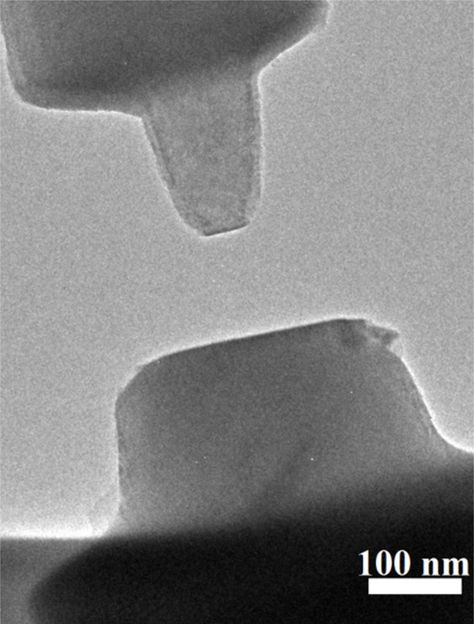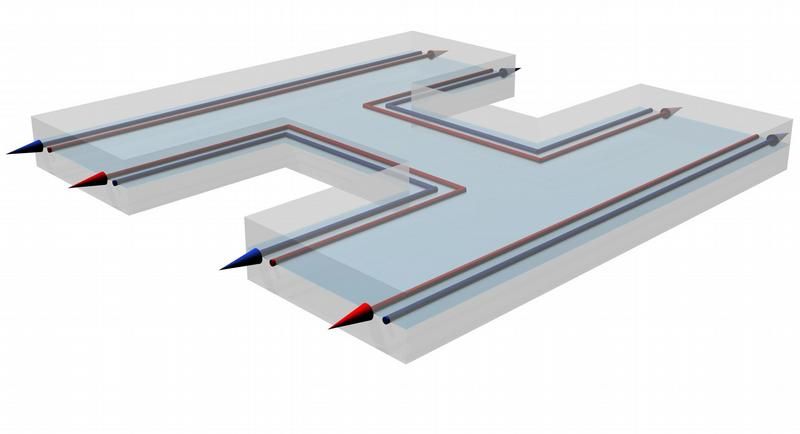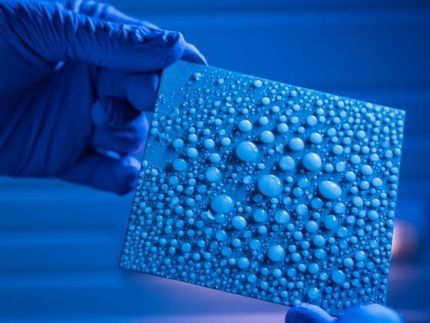Researchers 'watch' crystal structure change in real time
Washington State University researchers have met the long-standing scientific challenge of watching a material change its crystal structure in real time.
While exposing a sample of silicon to intense pressure--due to the impact of a nearly 12,000 mph plastic projectile--they documented the transformation from its common cubic diamond structure to a simple hexagonal structure. At one point, they could see both structures as the shock wave traveled through the sample in less than half a millionth of a second.
Their discovery is a dramatic proof of concept for a new way of discerning the makeups of various materials, from impacted meteors to body armor to iron in the center of the Earth.
Until now, researchers have had to rely on computer simulations to follow the atomic-level changes of a structural transformation under pressure, said Yogendra Gupta, Regents professor and director of the WSU Institute of Shock Physics. The new method provides a way to actually measure the physical changes and to see if the simulations are valid.
"For the first time, we can determine the structure," Gupta said. "We've been assuming some things but we had never measured it."
The researchers say their findings already suggest that several long-standing assumptions about the pathways of silicon's transformation "need to be reexamined."
The discovery was made possible by a new facility, the Dynamic Compression Sector at the Advanced Photon Source located at the Argonne National Laboratory. Designed and developed by WSU, the sector is sponsored by the U.S. Department of Energy's National Nuclear Security Administration, whose national security research mission includes fundamental dynamic compression science. The Advanced Photon Source synchrotron, funded by the Department of Energy's Office of Science, provided high-brilliance x-ray beams that pass through the test material and create diffraction patterns that the researchers use to decode a crystal changing its structure in as little as five billionths of a second.
"We're making movies," said Gupta. "We're watching them in real time. We're making nanosecond movies."
Stefan Turneaure a senior scientist at the WSU Institute for Shock Physics, said the researchers exposed silicon to 19 gigapascals, nearly 200,000 times atmospheric pressure. The researchers accomplished this by firing a half-inch plastic projectile into a thin piece of silicon on a Lexan backing. While x-rays hit the sample in pulses, a detector captured images of the diffracted rays every 153.4 nanoseconds--the equivalent of a camera shutter speed of a few millionths of a second.
"People haven't used x-rays like this before," said Turneaure. "Getting these multiple snapshots in a single impact experiment is new."
"What I'm very excited about is we are showing how the crystal lattice, how this diamond structure that silicon starts out with, is related to this ending structure, this hexagonal structure," said Gupta. "We can see which crystal direction becomes which crystal direction. Stefan has done a great job. He's mastered that. We were able to show how the two structures are linked in real time."
Original publication
Other news from the department science

Get the chemical industry in your inbox
By submitting this form you agree that LUMITOS AG will send you the newsletter(s) selected above by email. Your data will not be passed on to third parties. Your data will be stored and processed in accordance with our data protection regulations. LUMITOS may contact you by email for the purpose of advertising or market and opinion surveys. You can revoke your consent at any time without giving reasons to LUMITOS AG, Ernst-Augustin-Str. 2, 12489 Berlin, Germany or by e-mail at revoke@lumitos.com with effect for the future. In addition, each email contains a link to unsubscribe from the corresponding newsletter.
Most read news
More news from our other portals
Last viewed contents
Eugene_Concrete
HLA-Cw*16
Sung_Shin
OLCO_Petroleum_Group

Forces that align crystals and help them snap together measured

How mercury gets into the sea - Chemical fingerprint reveals origin
Dongyang_Cement
Lineweaver-Burk_plot
University of Wyoming uses NTA to characterize nanoparticles in natural environments
INP_(Korea)
Ace_Industry





























































